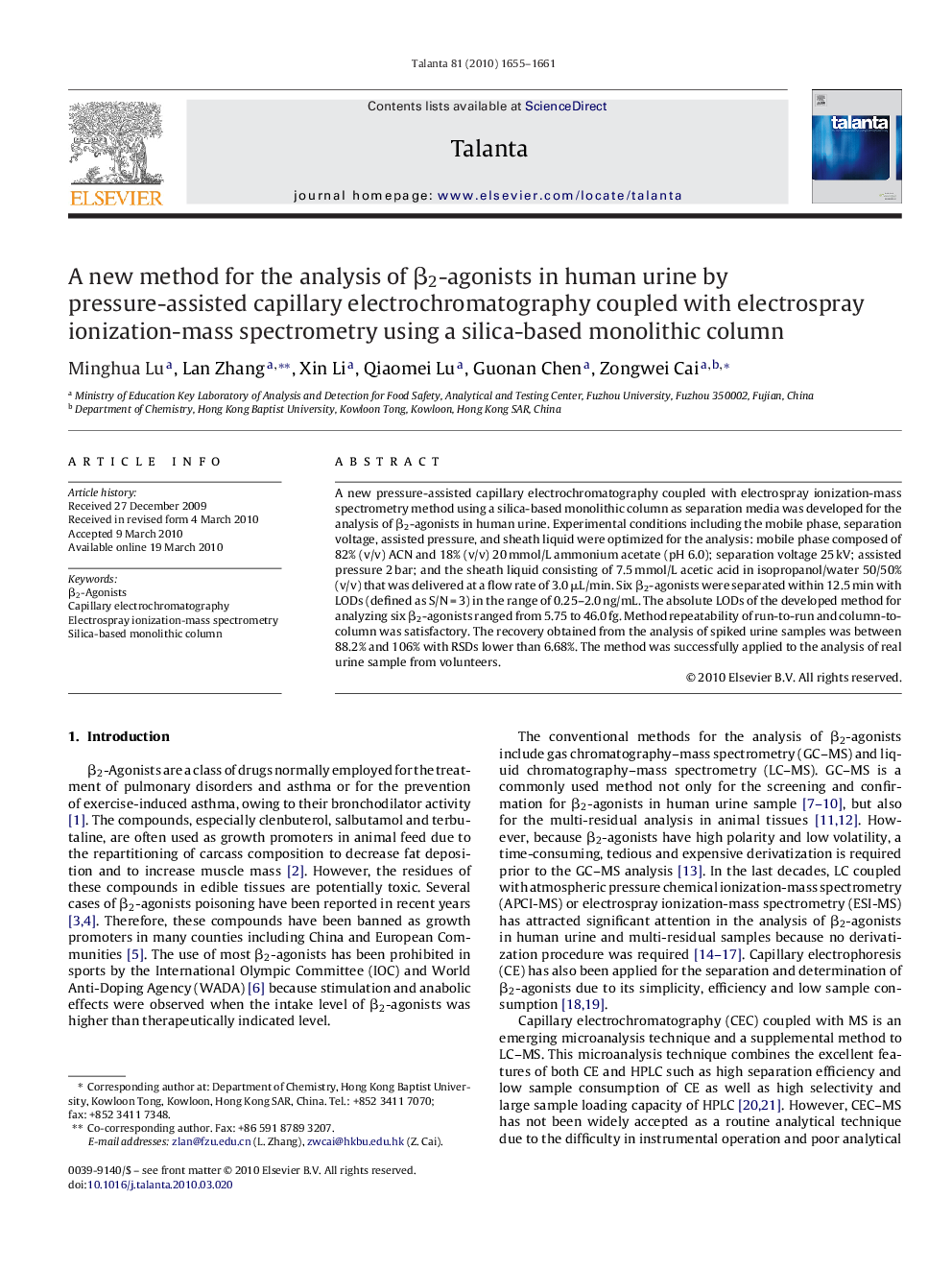| Article ID | Journal | Published Year | Pages | File Type |
|---|---|---|---|---|
| 1242685 | Talanta | 2010 | 7 Pages |
A new pressure-assisted capillary electrochromatography coupled with electrospray ionization-mass spectrometry method using a silica-based monolithic column as separation media was developed for the analysis of β2-agonists in human urine. Experimental conditions including the mobile phase, separation voltage, assisted pressure, and sheath liquid were optimized for the analysis: mobile phase composed of 82% (v/v) ACN and 18% (v/v) 20 mmol/L ammonium acetate (pH 6.0); separation voltage 25 kV; assisted pressure 2 bar; and the sheath liquid consisting of 7.5 mmol/L acetic acid in isopropanol/water 50/50% (v/v) that was delivered at a flow rate of 3.0 μL/min. Six β2-agonists were separated within 12.5 min with LODs (defined as S/N = 3) in the range of 0.25–2.0 ng/mL. The absolute LODs of the developed method for analyzing six β2-agonists ranged from 5.75 to 46.0 fg. Method repeatability of run-to-run and column-to-column was satisfactory. The recovery obtained from the analysis of spiked urine samples was between 88.2% and 106% with RSDs lower than 6.68%. The method was successfully applied to the analysis of real urine sample from volunteers.
